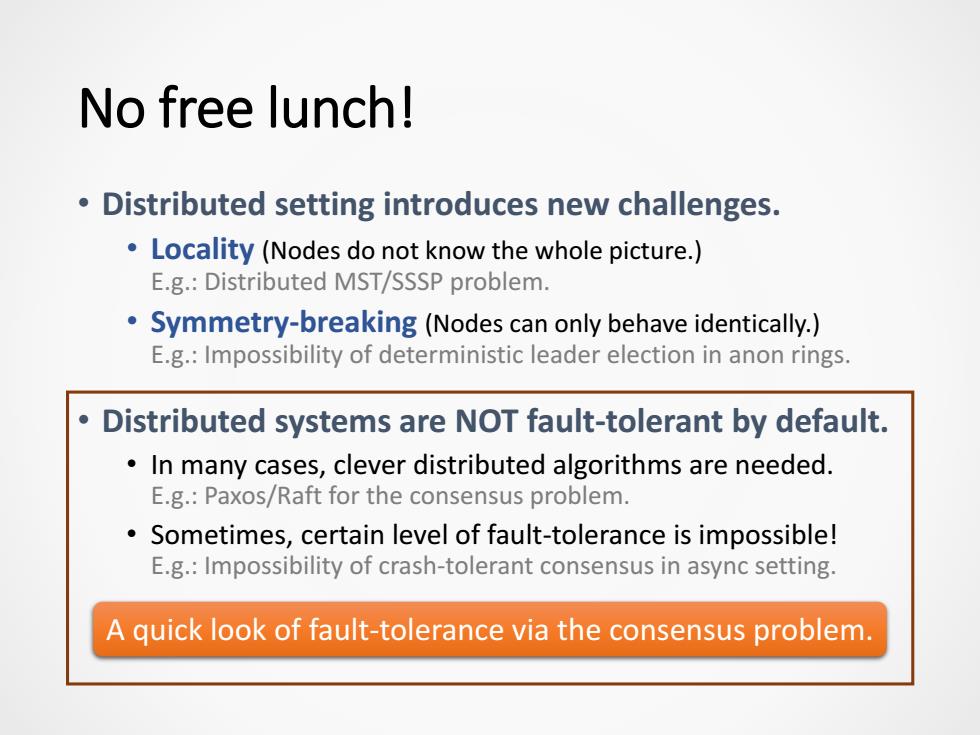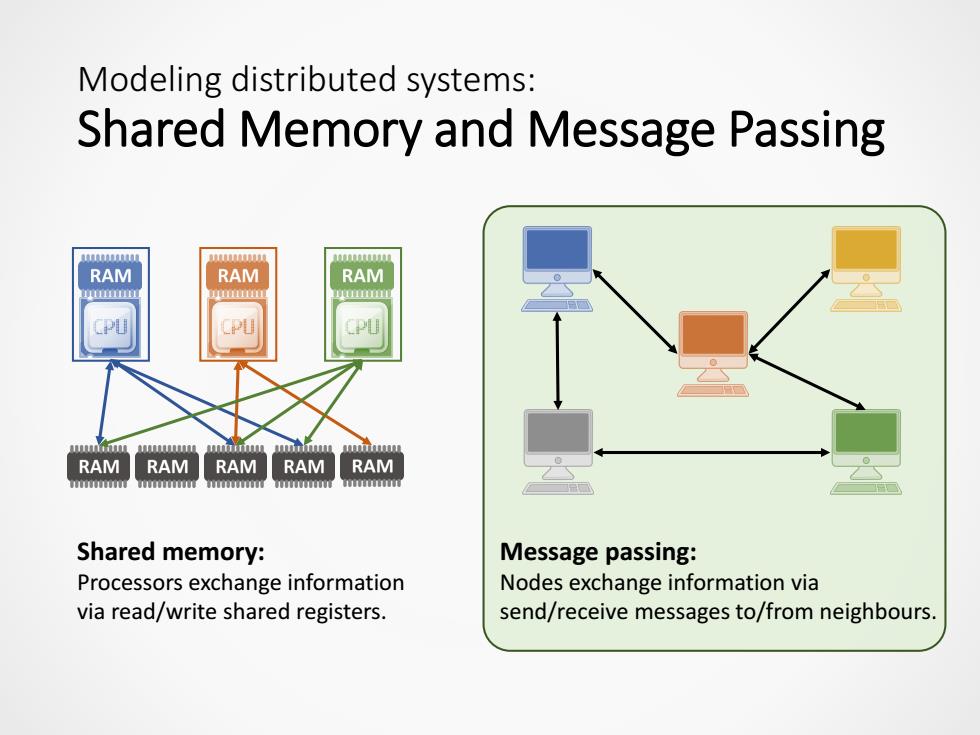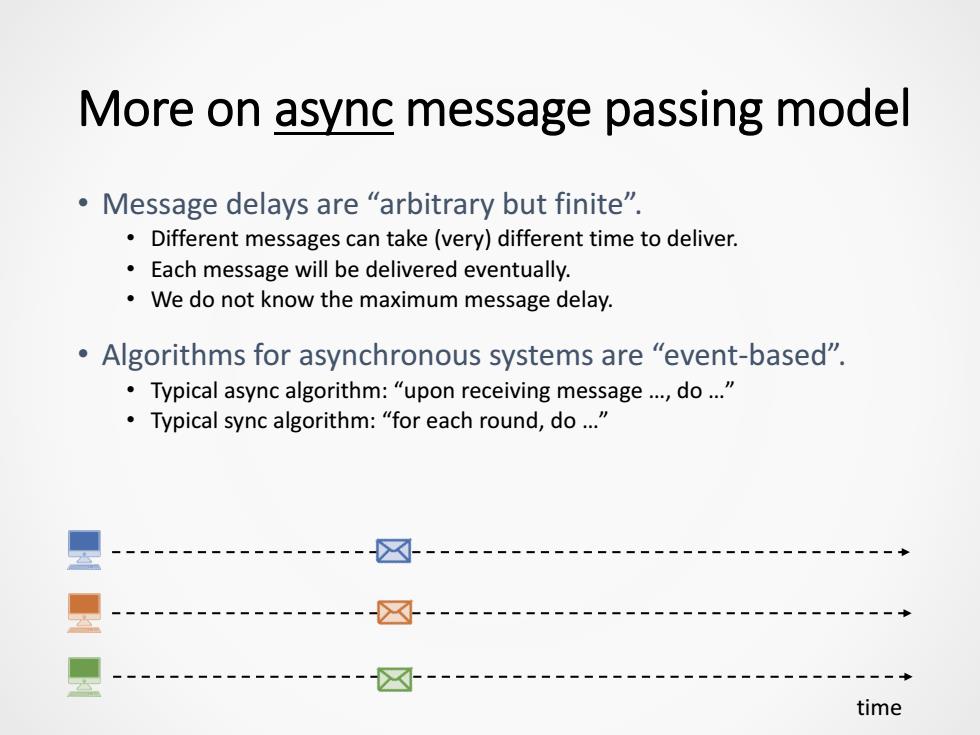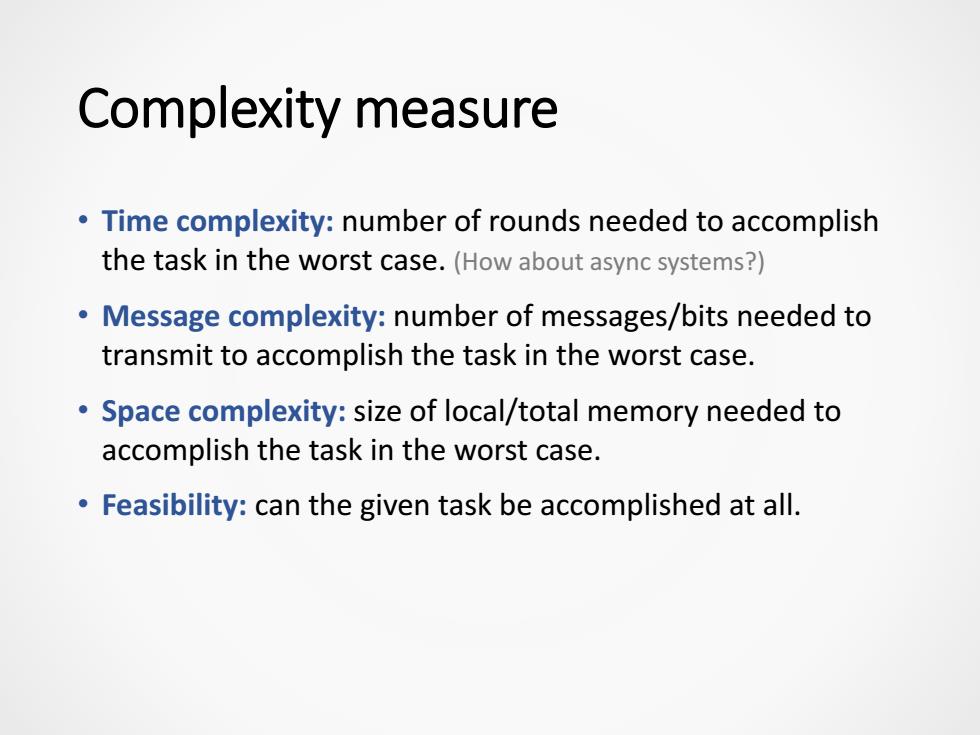
Distributed Consensus Reaching Agreement in Faulty Environment 郑朝栋 南京大学计算机科学与技术系
Distributed Consensus Reaching Agreement in Faulty Environment 郑朝栋 南京大学计算机科学与技术系

Distributed computing is everywhere! ☆ What is distributed computing? Multiple agents cooperate to accomplish a task f(P1,P2,P3,…,Pn)→Y
Distributed computing is everywhere! Multiple agents cooperate to accomplish a task 𝑓 𝑃1, 𝑃2, 𝑃3, ⋯ , 𝑃𝑛 → 𝑌 What is distributed computing?

Why we love distributed computing? 。Better performance 2020天猫双全球狂入 RYZEN hedoop 双111 交额49822 210为下hc 1406个4 Stronger fault-tolerance …fel DDos
Why we love distributed computing? • Better performance • Stronger fault-tolerance

No free lunch! Distributed setting introduces new challenges. Locality (Nodes do not know the whole picture.) E.g.:Distributed MST/SSSP problem. Symmetry-breaking(Nodes can only behave identically.) E.g.:Impossibility of deterministic leader election in anon rings. Distributed systems are NOT fault-tolerant by default. In many cases,clever distributed algorithms are needed. E.g.:Paxos/Raft for the consensus problem. Sometimes,certain level of fault-tolerance is impossible! E.g.:Impossibility of crash-tolerant consensus in async setting. A quick look of fault-tolerance via the consensus problem
No free lunch! • Distributed setting introduces new challenges. • Locality (Nodes do not know the whole picture.) E.g.: Distributed MST/SSSP problem. • Symmetry-breaking (Nodes can only behave identically.) E.g.: Impossibility of deterministic leader election in anon rings. • Distributed systems are NOT fault-tolerant by default. • In many cases, clever distributed algorithms are needed. E.g.: Paxos/Raft for the consensus problem. • Sometimes, certain level of fault-tolerance is impossible! E.g.: Impossibility of crash-tolerant consensus in async setting. A quick look of fault-tolerance via the consensus problem

10110 Model and Problem
Model and Problem

Modeling distributed systems: Shared Memory and Message Passing RAM RAM RAM M RAM RAM RAM RAM RAM 1 Shared memory: Message passing: Processors exchange information Nodes exchange information via via read/write shared registers. send/receive messages to/from neighbours
Modeling distributed systems: Shared Memory and Message Passing Shared memory: Processors exchange information via read/write shared registers. Message passing: Nodes exchange information via send/receive messages to/from neighbours

More on the message passing model Model the system as a graph Each node is a processor. Each edge is a bidirectional communication link. ·Synchronous systems Time proceeds in synchronous rounds. Each round lasts a fixed duration (e.g.,1 second). Nodes agree on beginning/ending of each round. one round ----十--- im
More on the message passing model • Model the system as a graph • Each node is a processor. • Each edge is a bidirectional communication link. • Synchronous systems • Time proceeds in synchronous rounds. • Each round lasts a fixed duration (e.g., 1 second). • Nodes agree on beginning/ending of each round. time one round

More on sync message passing model Nodes'behavior in each round: 1.Read messages from last round (if any).[Instantly done.] 2.Do local computation.[Instantly done.] 3.Send messages to neighbors (if any). Messages sent in round i guaranteed to arrive at destination by the beginning of round i+1. 里☆小十l 2{-☒----- 里☆-十--- time
More on sync message passing model • Nodes’ behavior in each round: 1. Read messages from last round (if any). [Instantly done.] 2. Do local computation. [Instantly done.] 3. Send messages to neighbors (if any). • Messages sent in round 𝑖 guaranteed to arrive at destination by the beginning of round 𝑖 + 1. time

More on async message passing model 。Message delays are“arbitrary but finite", Different messages can take(very)different time to deliver. Each message will be delivered eventually. We do not know the maximum message delay. Algorithms for asynchronous systems are "event-based". Typical async algorithm:"upon receiving message...,do..." Typical sync algorithm:"for each round,do..." ☒ ☒ ☒ time
More on async message passing model • Message delays are “arbitrary but finite”. • Different messages can take (very) different time to deliver. • Each message will be delivered eventually. • We do not know the maximum message delay. • Algorithms for asynchronous systems are “event-based”. • Typical async algorithm: “upon receiving message …, do …” • Typical sync algorithm: “for each round, do …” time

Complexity measure Time complexity:number of rounds needed to accomplish the task in the worst case.(How about async systems?) Message complexity:number of messages/bits needed to transmit to accomplish the task in the worst case. Space complexity:size of local/total memory needed to accomplish the task in the worst case. Feasibility:can the given task be accomplished at all
Complexity measure • Time complexity: number of rounds needed to accomplish the task in the worst case. (How about async systems?) • Message complexity: number of messages/bits needed to transmit to accomplish the task in the worst case. • Space complexity: size of local/total memory needed to accomplish the task in the worst case. • Feasibility: can the given task be accomplished at all